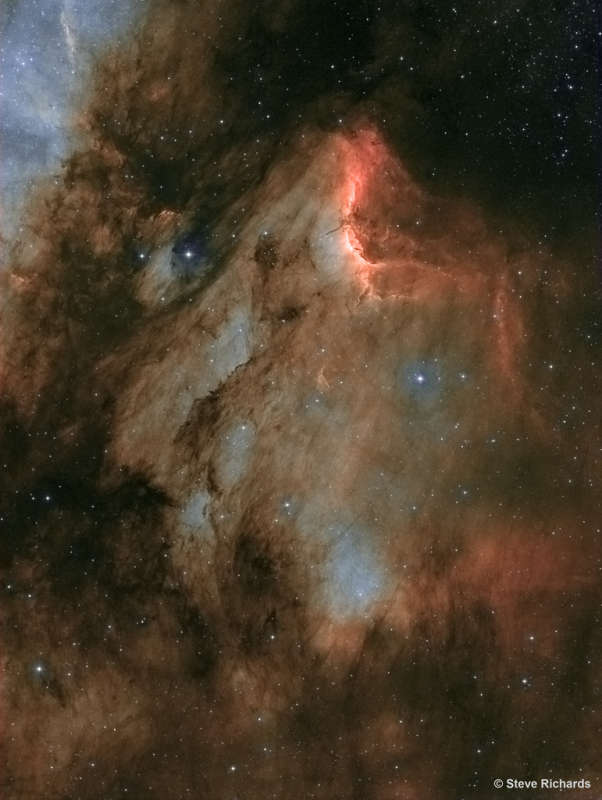
|
Credit & Copyright: Steve Richards
(Chanctonbury
Observatory)
Explanation:
The recognizable profile of the Pelican Nebula
soars nearly 2,000 light-years away in the high flying constellation
Cygnus,
the Swan.
Also known as IC 5070,
this interstellar cloud of gas and dust is appropriately found
just off the "east coast"
of the North America Nebula
(NGC 7000), another surprisingly familiar looking emission nebula
in Cygnus.
Both Pelican and North America nebulae are part of the
same large and
complex star forming region, almost as nearby as the
better-known Orion Nebula.
From our vantage point, dark dust clouds (upper left) help define
the Pelican's eye and long bill, while a
bright front of ionized gas
suggests the curved shape of the head and neck.
This striking synthesized color view utilizes
narrowband image data recording the emission of hydrogen and
oxygen atoms in the cosmic cloud.
The scene spans
some 30 light-years at the estimated distance of the Pelican Nebula.
|
January February March April May June July August September October November December |
| ||||||||||||||||||||||||||||||||||||||||||||||||
NASA Web Site Statements, Warnings, and Disclaimers
NASA Official: Jay Norris. Specific rights apply.
A service of: LHEA at NASA / GSFC
& Michigan Tech. U.
Based on Astronomy Picture
Of the Day
Publications with keywords: IC 5070 - emission nebula
Publications with words: IC 5070 - emission nebula
See also:
- APOD: 2025 December 17 Á W5: The Soul Nebula
- APOD: 2025 December 9 Á The Heart of the Soul Nebula
- APOD: 2025 September 19 Á The NGC 6914 Complex
- APOD: 2025 September 10 Á The Great Lacerta Nebula
- APOD: 2025 July 21 Á Cats Paw Nebula from Webb Space Telescope
- APOD: 2025 July 16 Á The Rosette Nebula from DECam
- APOD: 2025 July 5 Á Ou4: The Giant Squid Nebula
